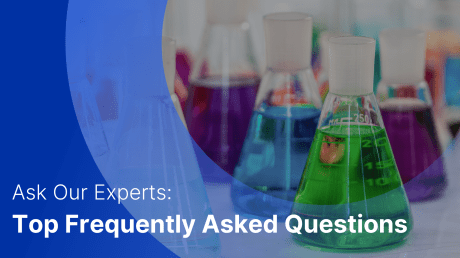
The Weekly Pulse: 28th November -2nd December

What’s HOT in our Regulatory World
What are our clients looking at?
This week’s trending sources in C2P
- EU: Packaging and Packaging Waste, Draft Regulation, November 2022
- Italy: Adoption of the Packaging labelling Guidelines, Decree No. 360/2022
- UK: Producer Responsibility Obligations (Packaging Waste) Regulations, SI 2007/871- Amendment – (on new recycling targets) Regulations. SI 2022/1222
What is our Content Team talking about?
Australian Parliament passes amendments to the Privacy Act 1988 to increase penalties and grant the Commissioner greater enforcement powers – Ani Nozadze
On 28 November 2022 the Australian parliament passed the Privacy Legislation Amendment (Enforcement and Other Measures) Bill 2022.
The amendments made to the Privacy Act 1988 will increase the penalties for serious or repeated privacy infringements to the following maximum amounts:
- for a person other than a body corporate – AUD 2,5 million;
- for a body corporate the greater of:
– AUD 50 million;
– three times the value of the benefit obtained; or
– if the court cannot determine the value of the benefit, 30% of their adjusted turnover in the relevant period.
The new law also enhances the enforcement powers of the Office of the Australian Information Commissioner (OAIC). The following is of note:
- Extraterritorial jurisdiction of the Privacy Act 1988 is amended to ensure that foreign organisations that carry out business in Australia meet the obligations under the Act, even if they do not collect or hold Australians’ personal information directly from a source in Australia;
- Types of declarations that the Commissioner can make in a determination at the conclusion of an investigation are expanded;
- Commissioner is given new powers to conduct assessments;
- Commissioner is provided with the new infringement notice powers to penalise those entities who fail to provide information without the need to engage in lengthy litigation;
- Notifiable Data Breaches scheme is strengthened to make sure the Commissioner has comprehensive knowledge of the information affected by the breach which will allow proper assessment of the risk of harm to individuals.
The adopted text of the bill has been submitted for Royal Assent which is imminent.
What are our Knowledge Partners talking about?
PFAS reporting rule in TSCA – Your chance to comment on proposed changes – Rina
Industry was not keen on the US Environmental Protection Agency’s (US EPA) plans to introduce a reporting rule for per and polyfluorinated alkyl substances (PFAS) announced last year, because the scope was extremely broad, applied retrospectively, had no de minimis level and implementation would be costly. In response to industry feedback, US EPA has made some changes to their proposal and are requesting further comments by 27th December 2022.
What the reporting rule will require and who needs to report
PFAS imported into the US after 1 January 2011 on their own, in mixtures or in articles, or PFAS manufactured in the US, will need to be reported to EPA. Information should be sought throughout the company in order to find the parts which may contain PFAS, identify suppliers of the material or part, and then to contact and collect data from those suppliers. The PFAS search could be based on knowing the uses of PFAS, the material and its manufacture followed by assessing the probability PFAS presence. Records relating to PFAS reporting and the activities to gather the information will need to be kept by the company for 5 years after submission to EPA. Where the PFAS substance in a product is part of another companies confidential business information, the company will need to submit their report jointly with their supplier or manufacturer who does have knowledge of the specific chemical present.
Some due diligence is expected, in order to find out if the PFAS is present, but this does not extend to requiring chemical testing on articles according to a clarification issued by US EPA. So if, having searched, there are still gaps in understanding relating to historical products (perhaps the supplier has gone out of business), it is reasonable to explain the reason for the knowledge gap and not do testing.
What PFAS are covered?
EPA are thinking of limiting the PFAS covered by the rule to a specific named list, rather than all chemicals with the feature of the per or polyfluoroalkyl group. This means that rather than many thousands of un-named PFAS, the reporting requirement will only apply to those already listed in TSCA inventory (1364 substances). EPA are also considering setting reporting thresholds below which reporting is not required (based on a threshold of 2,500 or 25,000lbs produced annually or value of sales), and maybe excluding some research and development uses.
Have I got reportable PFAS in my product?
PFAS are common in flexible plastic and synthetic rubber, textiles especially if dirt resistant or waterproof, electrical & electronic equipment including batteries, gaskets and seals, bearing surfaces and also in greases and lubricants, hydraulic fluids, surfactants, adhesives, sealants and coatings. Because PFAS are not hazardous according to the Globally Harmonised System for Classification and Labelling (GHS), they are not usually shown on Safety Data Sheets. The only way of being sure is to ask your material suppliers, and to check with your part suppliers.
Next steps
US PFAS Manufacturers and companies importing articles into the US, should consider submitting comments about the rule and the proposed changes suggested by the Small Business Advocacy Review (SBAR) Panel 4 . For past products marketed from 1 January 2011, it is advisable to find what information is available in-house and across historical supply chains as soon as possible, as this will be time consuming to obtain. It is also worthwhile keeping in mind that companies that are impacted by this rule will have six months to comply with the rule’s reporting requirements. It is also advisable to set up data collection processes for current and future products, on an ongoing basis.
What are our clients asking about?
“What products are subject to Belgium: Methods of Communication, Format of the Index of Repairability and Accessibility to Technical Standards, Draft Royal Decree, September 2022? Is it for B2B, B2C or both?“
Answer by Dieudonné Ymedji
This Belgian draft royal decree does not differentiate between B2B and B2C products.
However, taking into account the list of products in scope as specified in the other draft royal decree determining the products covered by the repairability score, the technical standards enabling to establish the scores for each of the criteria and the method of calculating the overall index:
- household front-loading and top-loading washing machines
- household dishwashers
- household vacuum cleaners, wired, cordless and robots
- high pressure cleaners
- wired electric lawn mowers, with batteries and robots
- smartphones
- television sets
- laptops including digital tablets
- bicycles and electrically assisted pedal cycles, one may assume that B2B transactions are somehow excluded.
Stay Updated On Global Regulations With The Weekly Pulse
This information is based on the most viewed regulations on C2P this month.
Sign up to get the latest compliance news delivered to your inbox weekly, for free!
The Pulse – Weekly Newsletter
Get the latest compliance news delivered straight to your inbox








